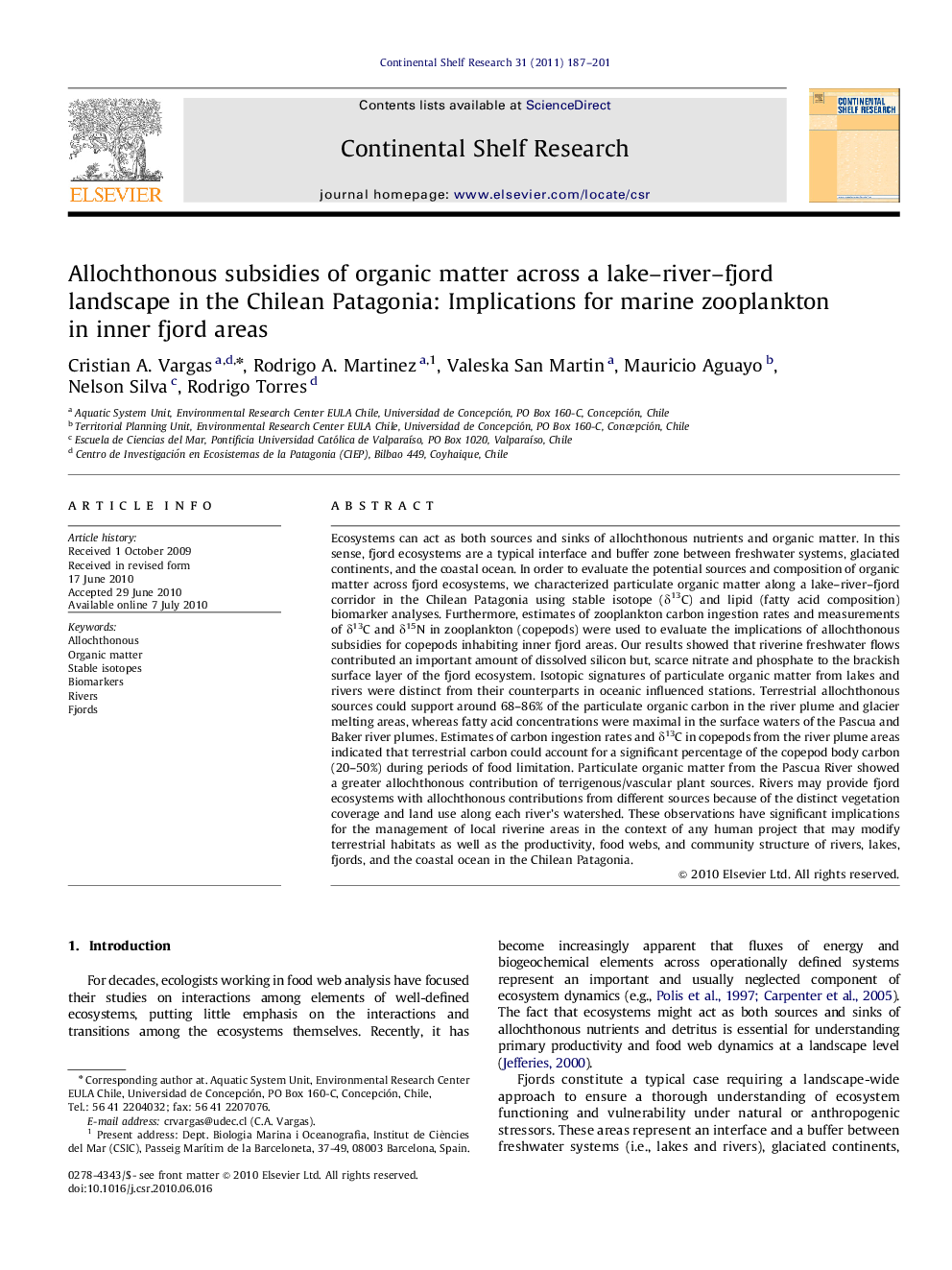| کد مقاله | کد نشریه | سال انتشار | مقاله انگلیسی | نسخه تمام متن |
|---|---|---|---|---|
| 4532698 | 1626180 | 2011 | 15 صفحه PDF | دانلود رایگان |

Ecosystems can act as both sources and sinks of allochthonous nutrients and organic matter. In this sense, fjord ecosystems are a typical interface and buffer zone between freshwater systems, glaciated continents, and the coastal ocean. In order to evaluate the potential sources and composition of organic matter across fjord ecosystems, we characterized particulate organic matter along a lake–river–fjord corridor in the Chilean Patagonia using stable isotope (δ13C) and lipid (fatty acid composition) biomarker analyses. Furthermore, estimates of zooplankton carbon ingestion rates and measurements of δ13C and δ15N in zooplankton (copepods) were used to evaluate the implications of allochthonous subsidies for copepods inhabiting inner fjord areas. Our results showed that riverine freshwater flows contributed an important amount of dissolved silicon but, scarce nitrate and phosphate to the brackish surface layer of the fjord ecosystem. Isotopic signatures of particulate organic matter from lakes and rivers were distinct from their counterparts in oceanic influenced stations. Terrestrial allochthonous sources could support around 68–86% of the particulate organic carbon in the river plume and glacier melting areas, whereas fatty acid concentrations were maximal in the surface waters of the Pascua and Baker river plumes. Estimates of carbon ingestion rates and δ13C in copepods from the river plume areas indicated that terrestrial carbon could account for a significant percentage of the copepod body carbon (20–50%) during periods of food limitation. Particulate organic matter from the Pascua River showed a greater allochthonous contribution of terrigenous/vascular plant sources. Rivers may provide fjord ecosystems with allochthonous contributions from different sources because of the distinct vegetation coverage and land use along each river’s watershed. These observations have significant implications for the management of local riverine areas in the context of any human project that may modify terrestrial habitats as well as the productivity, food webs, and community structure of rivers, lakes, fjords, and the coastal ocean in the Chilean Patagonia.
Journal: Continental Shelf Research - Volume 31, Issues 3–4, 1 March 2011, Pages 187–201